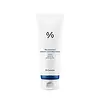What's inside
What's inside
 Key Ingredients
Key Ingredients

 Benefits
Benefits

 Concerns
Concerns

 Ingredients Side-by-side
Ingredients Side-by-side

Maltose
MaskingZea Mays Starch
AbsorbentSodium Cocoyl Glycinate
CleansingSodium Lauroyl Glutamate
Sodium Myristoyl Glutamate
CleansingMicrocrystalline Cellulose
AbsorbentSilica
AbrasiveAllantoin
Skin ConditioningDipotassium Glycyrrhizate
HumectantLimonene
PerfumingParfum
MaskingCitric Acid
BufferingWater
Skin ConditioningButylene Glycol
HumectantProtease
ExfoliatingLactobacillus Ferment
Skin Conditioning1,2-Hexanediol
Skin ConditioningAmaranthus Caudatus Seed Extract
Skin ConditioningUlmus Davidiana Root Extract
Skin ConditioningCaprylyl Glycol
EmollientBifida Ferment Filtrate
Skin ConditioningBifida Ferment Lysate
Skin ConditioningLactobacillus Ferment Lysate
Skin ConditioningLactococcus Ferment Lysate
Skin ConditioningSaccharomyces Ferment Filtrate
HumectantTropolone
Skin ConditioningMaltose, Zea Mays Starch, Sodium Cocoyl Glycinate, Sodium Lauroyl Glutamate, Sodium Myristoyl Glutamate, Microcrystalline Cellulose, Silica, Allantoin, Dipotassium Glycyrrhizate, Limonene, Parfum, Citric Acid, Water, Butylene Glycol, Protease, Lactobacillus Ferment, 1,2-Hexanediol, Amaranthus Caudatus Seed Extract, Ulmus Davidiana Root Extract, Caprylyl Glycol, Bifida Ferment Filtrate, Bifida Ferment Lysate, Lactobacillus Ferment Lysate, Lactococcus Ferment Lysate, Saccharomyces Ferment Filtrate, Tropolone
Water
Skin ConditioningMyristic Acid
CleansingGlycerin
HumectantPotassium Hydroxide
BufferingLauric Acid
CleansingPalmitic Acid
EmollientStearic Acid
CleansingGlyceryl Glucoside
HumectantLauryl Betaine
CleansingPolyglyceryl-2 Stearate
EmulsifyingBeeswax
Emulsion StabilisingGlyceryl Stearate
EmollientStearyl Alcohol
EmollientCitrus Aurantium Dulcis Peel Oil
MaskingCitrus Paradisi Peel Oil
MaskingCitrus Aurantium Bergamia Fruit Oil
MaskingButylene Glycol
HumectantGlucose
HumectantDisodium EDTA
Melaleuca Alternifolia Leaf Oil
AntioxidantHydrolyzed Hyaluronic Acid
HumectantCitrus Limon Fruit Extract
MaskingHippophae Rhamnoides Fruit Extract
Skin ConditioningCitrus Aurantium Dulcis Fruit Extract
MaskingGlycyrrhiza Glabra Root Extract
BleachingLactobacillus Ferment Lysate
Skin Conditioning1,2-Hexanediol
Skin ConditioningSodium Hyaluronate
HumectantCandida Bombicola/Glucose/Methyl Rapeseedate Ferment
AntimicrobialLactobacillus Ferment
Skin ConditioningLactococcus Ferment Lysate
Skin ConditioningBifida Ferment Filtrate
Skin ConditioningBifida Ferment Lysate
Skin ConditioningSaccharomyces Ferment Filtrate
HumectantWater, Myristic Acid, Glycerin, Potassium Hydroxide, Lauric Acid, Palmitic Acid, Stearic Acid, Glyceryl Glucoside, Lauryl Betaine, Polyglyceryl-2 Stearate, Beeswax, Glyceryl Stearate, Stearyl Alcohol, Citrus Aurantium Dulcis Peel Oil, Citrus Paradisi Peel Oil, Citrus Aurantium Bergamia Fruit Oil, Butylene Glycol, Glucose, Disodium EDTA, Melaleuca Alternifolia Leaf Oil, Hydrolyzed Hyaluronic Acid, Citrus Limon Fruit Extract, Hippophae Rhamnoides Fruit Extract, Citrus Aurantium Dulcis Fruit Extract, Glycyrrhiza Glabra Root Extract, Lactobacillus Ferment Lysate, 1,2-Hexanediol, Sodium Hyaluronate, Candida Bombicola/Glucose/Methyl Rapeseedate Ferment, Lactobacillus Ferment, Lactococcus Ferment Lysate, Bifida Ferment Filtrate, Bifida Ferment Lysate, Saccharomyces Ferment Filtrate
 Reviews
Reviews

Ingredients Explained
These ingredients are found in both products.
Ingredients higher up in an ingredient list are typically present in a larger amount.
1,2-Hexanediol is a synthetic liquid and another multi-functional powerhouse.
It is a:
- Humectant, drawing moisture into the skin
- Emollient, helping to soften skin
- Solvent, dispersing and stabilizing formulas
- Preservative booster, enhancing the antimicrobial activity of other preservatives
Bifida ferment filtrate is derived from the fermentation of Bifida bacteria (often with dairy). It is a probiotic and helps to strengthen our skin's microbiome.
Bifida Ferment Lysate is derived from the fermentation of Bifida bacteria (often with dairy). It is a probiotic and helps to strengthen our skin's microbiome.
Having a healthy microbiome helps protect our skin against infection. It also helps our skin stay hydrated and healthy.
Studies also show this ingredient to be a promising soothing ingredient for sensitive skin.
Learn more about Bifida Ferment LysateButylene Glycol (or BG) is used within cosmetic products for a few different reasons:
Overall, Butylene Glycol is a safe and well-rounded ingredient that works well with other ingredients.
Though this ingredient works well with most skin types, some people with sensitive skin may experience a reaction such as allergic rashes, closed comedones, or itchiness.
Learn more about Butylene GlycolLactobacillus Ferment is created by fermenting the Lactobacillus bacteria. It helps keep our skin's natural barrier and microbiome healthy.
Studies show lactobacillus ferment to be effective at repairing the skin barrier. Having a healthy skin barrier helps keep your skin healthy and hydrated. It also protects against bad bacteria.
As a probiotic/prebiotic/postbiotic, Lactobacillus ferment can help regular our natural biome. In fact, one study found a lack of diversity in our natural skin biome can trigger acne.
Learn more about Lactobacillus FermentLactobacillus Ferment Lysate is a postbiotic with skin soothing properties. Postbiotics are inactive molecules produced by probiotic bacteria that provide skin benefits.
This ingredient comes from the secretion of the bacteria, Lactobacillus.
Studies show this ingredient can help calm redness and may help treat the signs of photoaging; however, the evidence is inconclusive and further studies are needed.
Learn more about Lactobacillus Ferment LysateLactococcus Ferment Lysate is a postbiotic created by fermenting Lactoccus lactis, a type of bacteria more commonly used to create Lactic acid.
Postbiotics are inactive molecules produced by probiotic bacteria that provide skin benefits.
This ingredient offers promising benefits, but it is relatively new and more evidence is needed to prove its efficacy. The manufacturer claims this ingredient:
A study from 2022 found this ingredient helped protect skin against damaged from UV exposure (though this should not replace your sunscreen!).
The lysate in the ingredient name refers to a fluid that forms from breaking down the cell membrane.
Learn more about Lactococcus Ferment LysateSaccharomyces Ferment Filtrate is created from fermenting Saccharomyces, a yeast also known as baker's yeast or brewer's yeast.
As a humectant, Saccharomyces Ferment Filtrate helps draw moisture from the air to your skin to keep your skin hydrated. The humectant properties comes from its beta-glucan content.
Water. It's the most common cosmetic ingredient of all. You'll usually see it at the top of ingredient lists, meaning that it makes up the largest part of the product.
So why is it so popular? Water most often acts as a solvent - this means that it helps dissolve other ingredients into the formulation.
You'll also recognize water as that liquid we all need to stay alive. If you see this, drink a glass of water. Stay hydrated!
Learn more about Water